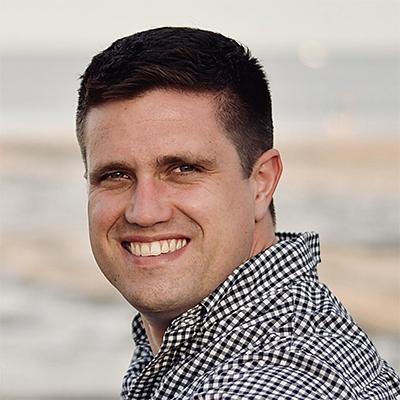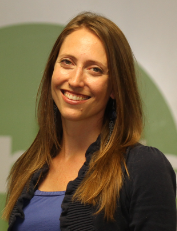In the final months of 2020, we sat in on nearly three dozen conversations with teams of district leaders and community-based nonprofits that are collaborating to run learning hubs.
Learning hubs provide in-person learning environments or intensive virtual support to students—often in small groups. They offer school systems promising opportunities to rethink how they work with other organizations in their communities; experiment with new ways of using time, talent, and physical space; and customize the support and learning experiences they provide to students.
This year we will be supporting a small number of districts that are launching ambitious efforts to use learning hubs to transform the way they support student learning long after the COVID-19 crisis passes.
We plan to announce details soon. In the meantime, we wanted to share these lessons from conversations with district leaders, which offer a critical window into how district leaders are thinking about innovation right now.
1. Districts are hungry for new methods of engaging hard-to-reach students to drive long-term systems change.
Many districts we talked to could quote a number—often in the hundreds or the thousands—of students with whom they’d lost contact during the pandemic, or who had fallen drastically behind on their academics.
Leaders told us they had stopped thinking that learning loss and mental health are separate problems. They’re closely related, and solutions should be, too. An academic leader at a large school district in the southeast said mental health professionals reported a growing number of teenagers despairing over their flagging academic prospects, telling counselors: “I’m never going to catch up.”
Their district was preparing to reopen campuses for disengaged students, so they could access support in core academics and enrichment programs to boost engagement, racial justice, and belonging. Longer term, leaders see these arrangements driving durable systemic changes such as student seat time, more flexible high school scheduling, and a more diverse mix of learning experiences.
2. Districts leverage hubs to tap their communities for new sources of talent, but unions may pose a critical barrier.
The pandemic has prompted district leaders to discover caring adults in their communities who are eager to support students’ learning—but stuck on the sidelines. Many of the community organizations that help run learning hubs are staffed by people who have close ties to students and their families.
Some of these people, in one district leader’s words, already are teachers. They just haven’t been trained and certified as teachers. Many of them are adults who match the backgrounds of the students they serve but are disproportionately screened out of the current teacher pipeline at every stage. Some districts we spoke with were looking to keep these groups more heavily involved in supporting students after the pandemic. But a few were hoping to go further, treating community groups—which previously may have led afterschool programs but sat on the sidelines during the school day—as a potential source of more diverse teacher recruits. And these districts were starting to encounter barriers. New teacher hiring and certification procedures would have to be negotiated with their local unions.
Some districts were optimistic they could figure it out, aided by their communities’ demands for more teachers who were bilingual or shared more life experiences with their students. Whether they can actually overcome these barriers could be a critical question as the teaching profession confronts flagging morale and the potential of a growing educator shortage.
3. State rules can leave districts stuck in a box.
Districts sought temporary reprieve from state regulations or devised bureaucratic workarounds to fund, staff, and operate learning hubs—which are often located off campus and staffed by organizations outside the district.
Some districts told us that their states had relaxed rules governing the amount of time students have to spend in class. That gave them new freedom to experiment with where and when learning happened. But district leaders worry the flexibility they won during the crisis will be fleeting.
One California district worried the state would return to its old methods of funding schools based on average daily attendance. Districts can apply for waivers from seat time and other rules, but the need to jump through hoops for flexibility prompted one district leader to quip that their state was home to “the world’s fifth-largest economy, first-largest bureaucracy.”
This will be a critical question for state lawmakers convening this spring: Which flexibilities that they extended to schools during this crisis ought to become permanent? What are essential safeguards that protect families and the public interest that need to be preserved or strengthened? What are some areas where they need to devise entirely new sets of rules?
4. The map for systemic transformation in education is changing—and so is the playbook.
Few of the most promising efforts we’ve seen are happening in districts that could be described as “reform hotspots”—places where superintendents are fixtures on the national conference circuit or high-profile political battles flare over charter schools. But we have discovered a hunger for transformational change among rural districts, diversifying suburbs, or cities where reformers have been banging their heads against the wall for decades.
Two years ago, CRPE postulated that the urban school reform playbook of the past two decades was hitting a wall, and began sketching a new path forward. In the current crisis, districts are beginning to chart their own versions of that path: Lower the barriers between school and community. Address the in- and out-of-school drivers of educational inequity. Focus on the students at the margins. Reimagine the teaching profession and the continuum between high school, college, and career.
Districts that prioritized relationships with families and community groups before the pandemic seem to be better positioned to adjust to this crisis because lines of trust and communication were already established. The question is whether they’ll be able to grant these groups a meaningful voice in their efforts to build new solutions.
5. A crisis may be the hardest time to innovate—and the time when innovation is most essential.
This may not seem like an ideal time for a fundamental rethinking of public education. Simply continuing instruction and basic support for students has required herculean efforts by the school districts we spoke with. But the current crisis has also created new opportunities for systemic transformation. It overturned foundational assumptions about what school should look like, where learning can happen, or who can be a teacher. It has forced school systems to forge new partnerships with people working in their communities. It has thrust parents into new roles as co-educators and forced students to take more responsibility for their own learning.
In these disruptions lie the seeds of an education system that is more capable of delivering learning experiences to students that better match their passions and plans after graduation, one that more effectively harnesses the strengths and know-how of communities, and one capable of delivering individualized support that allows every child to fulfill their inherent potential.
The districts we spoke with were scared not only that the existing crisis has begun to exacerbate inequalities, but that they would soon, in the words of one district leader, “just fall back into the old way of doing school” that was falling to meet many of their students’ needs.
These district leaders conveyed a sense of urgency to meet their students’ immediate needs—and also to seize the opportunity to build something better. Leaders in one district were energized that state lawmakers were working on a multimillion-dollar state innovation fund. Other states, like Colorado, have seen eager responses to grants that challenge districts to build new programs and rethink core assumptions about school—and also give them resources to realize those visions.
Last March, the pandemic forced America’s schools to throw away their playbook. Supporting leaders to write a better one is now essential work. We must help school systems respond to the crisis, recover lost learning, and redesign something better—all at once. We look forward to supporting that work in the new year.





